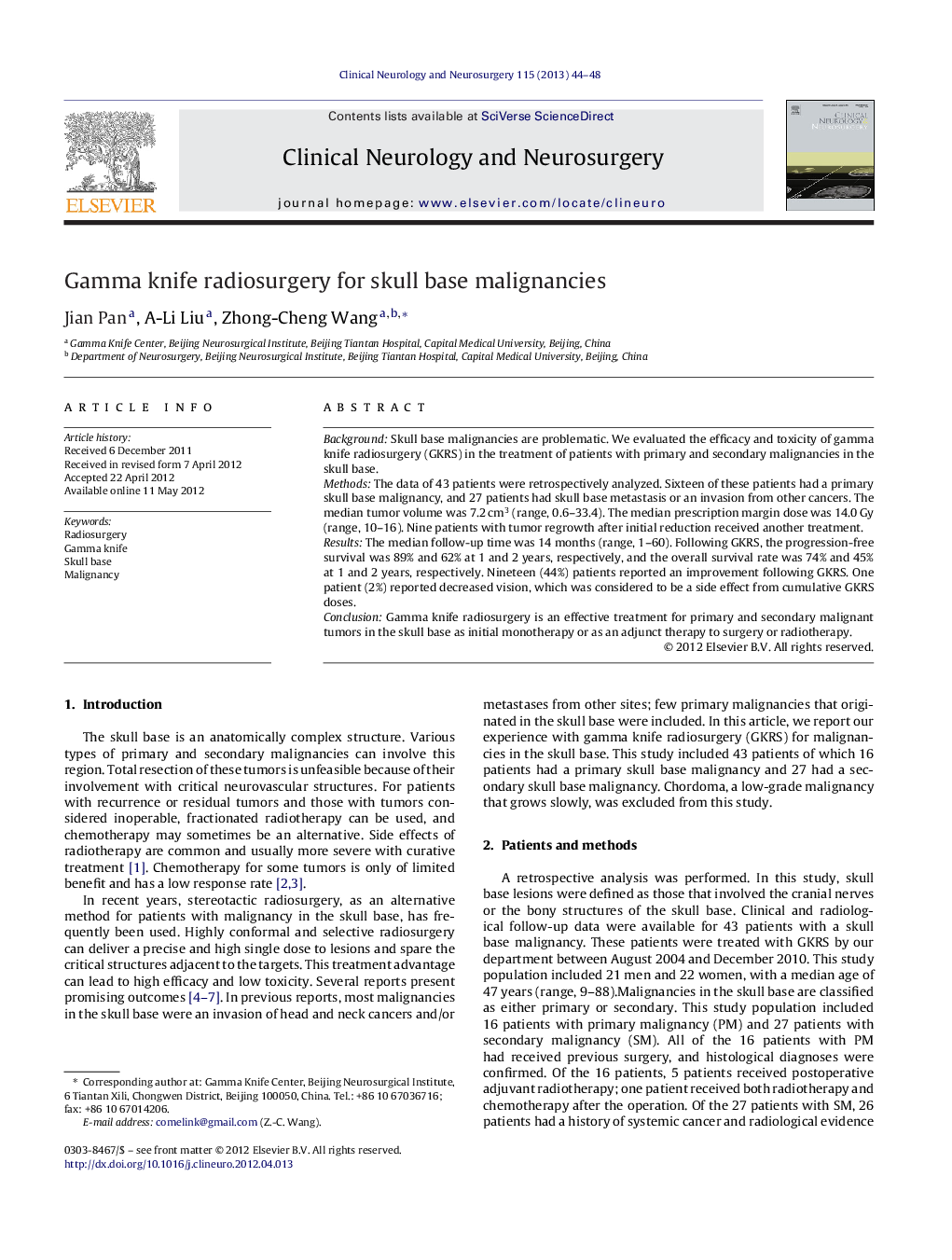| Article ID | Journal | Published Year | Pages | File Type |
|---|---|---|---|---|
| 3040746 | Clinical Neurology and Neurosurgery | 2013 | 5 Pages |
BackgroundSkull base malignancies are problematic. We evaluated the efficacy and toxicity of gamma knife radiosurgery (GKRS) in the treatment of patients with primary and secondary malignancies in the skull base.MethodsThe data of 43 patients were retrospectively analyzed. Sixteen of these patients had a primary skull base malignancy, and 27 patients had skull base metastasis or an invasion from other cancers. The median tumor volume was 7.2 cm3 (range, 0.6–33.4). The median prescription margin dose was 14.0 Gy (range, 10–16). Nine patients with tumor regrowth after initial reduction received another treatment.ResultsThe median follow-up time was 14 months (range, 1–60). Following GKRS, the progression-free survival was 89% and 62% at 1 and 2 years, respectively, and the overall survival rate was 74% and 45% at 1 and 2 years, respectively. Nineteen (44%) patients reported an improvement following GKRS. One patient (2%) reported decreased vision, which was considered to be a side effect from cumulative GKRS doses.ConclusionGamma knife radiosurgery is an effective treatment for primary and secondary malignant tumors in the skull base as initial monotherapy or as an adjunct therapy to surgery or radiotherapy.
